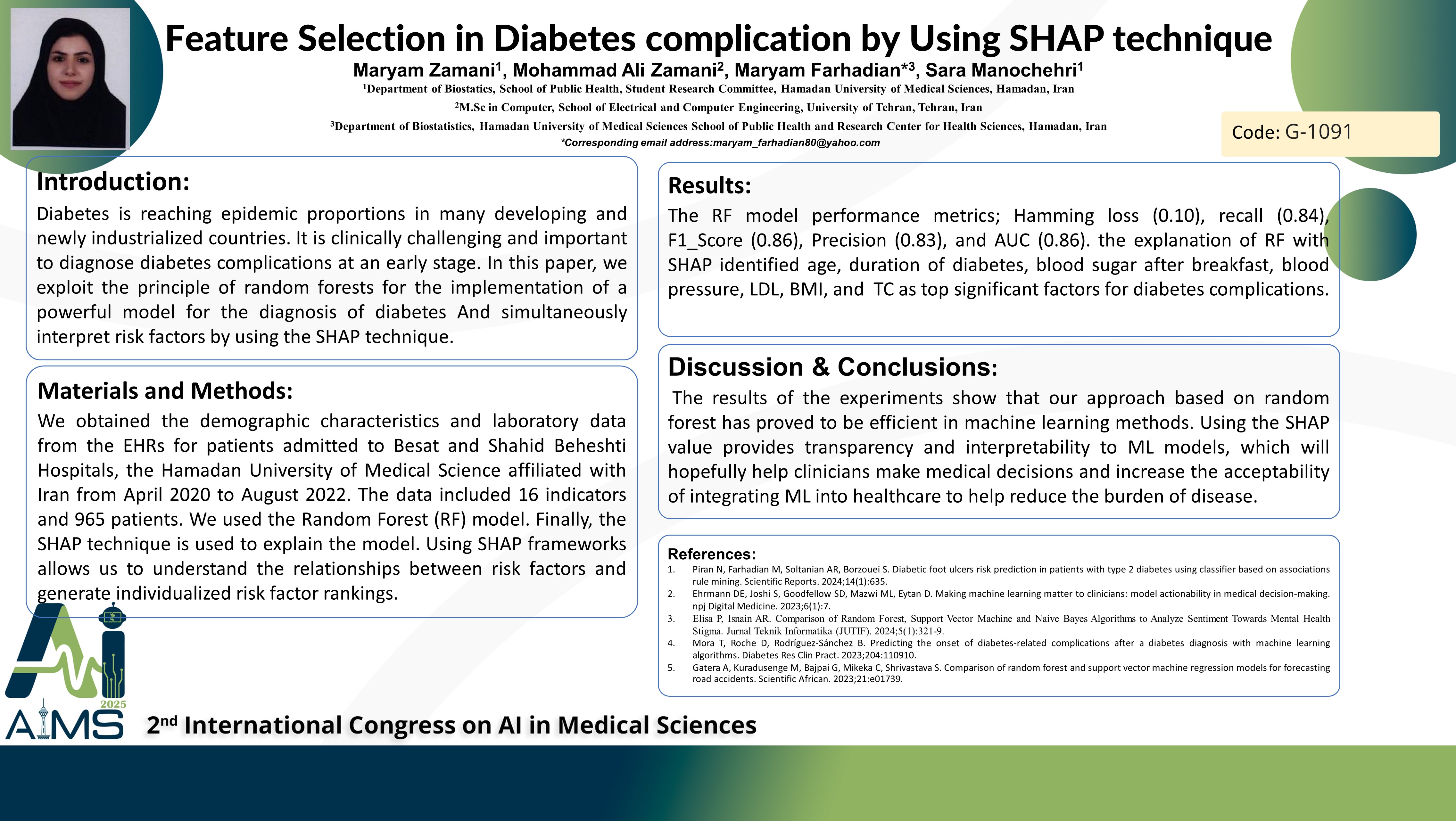انتخاب ویژگی در عوارض دیابت با استفاده از تکنیک SHAP
کد: G-1091
نویسندگان: Maryam Zamani ℗, Mohammad Ali Zamani, Maryam Farhadian *, Sara Manochehri
زمان بندی: زمان بندی نشده!
برچسب: پردازش سیگنال های پزشکی
دانلود: دانلود پوستر
خلاصه مقاله:
خلاصه مقاله
Background and aims: Diabetes is reaching epidemic proportions in many developing and newly industrialized countries. It is clinically challenging and important to diagnose diabetes complications at an early stage. In this paper, we exploit the principle of random forests for the implementation of a powerful model for the diagnosis of diabetes And simultaneously interpret risk factors by using the SHAP technique. Methods: We obtained the demographic characteristics and laboratory data from the EHRs for patients admitted to Besat and Shahid Beheshti Hospitals, the affiliated hospitals of the Hamadan University of Medical Science in Iran from April 2020 to August 2022. The data included 16 indicators and 965 patients. We used the Random Forest (RF) model. Finally, the SHAP technique is used to explain the model. Using SHAP frameworks allows us to understand the relationships between risk factors and generate individualized risk factor rankings. Results: The RF model performance metrics; Hamming loss (0.10), recall (0.84), F1_Score (0.86), Precision (0.83), and AUC (0.86). the explanation of RF with SHAP identified age, duration of diabetes, blood sugar after breakfast, blood pressure, LDL, BMI, and TC as top significant factors for diabetes complications. Conclusions: The results of the experiments show that our approach based on random forest has proved to be efficient in machine learning methods. Using the SHAP value provides transparency and interpretability to ML models, which will hopefully help clinicians make medical decisions and increase the acceptability of integrating ML into healthcare to help reduce the burden of disease.
کلمات کلیدی
Diabetic Complication, Machine Learning, Random Forest
